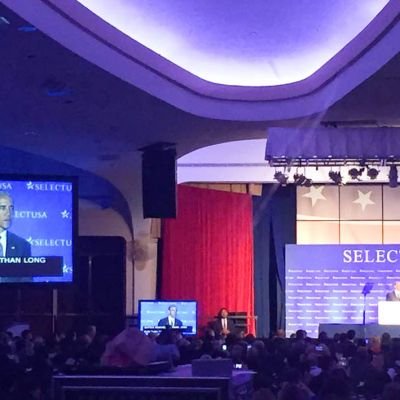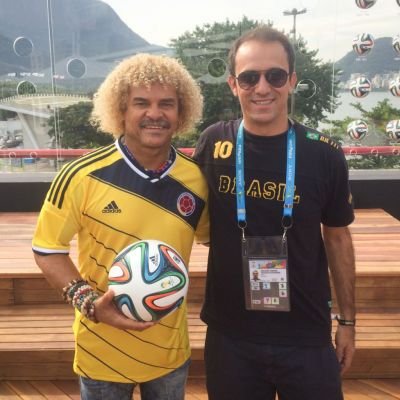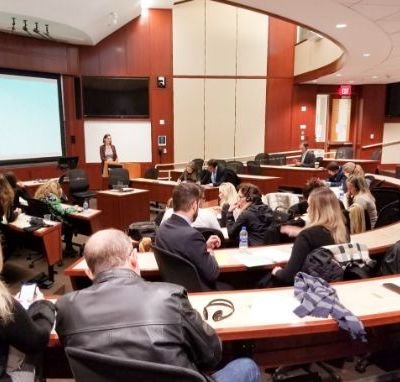We work with consecutive translation (no equipment required) for assistance, visits, meetings, market research, press conferences, presentations in general, audits and others.
We operate throughout Brazil from our bases in Rio de Janeiro, São Paulo and the Ribeirão Preto region, in addition to operating in the United States from our base in New York.
Here you will find a group of professional interpreters with extensive experience to meet your technical needs across several languages.
If you need to hire translation services for your event, whether it is a large convention or a small meeting, we recommend that you read the following items to better understand the world of consecutive translation.
WHAT IS CONSECUTIVE TRANSLATION?
Consecutive translation is the oral translation modality in which the speaker speaks for a few moments, usually in short intervals, and then interrupts the presentation to allow the interpreter to translate that excerpt.
Consecutive translation does not require translation equipment. Speaker and interpreter will only use existing sound equipment, in the case of a medium or large event such as a press conference, or will not use any equipment at all, in the case of small meetings that usually have a short duration.
WHICH TYPE OF CONSECUTIVE TRANSLATION IS MOST APPROPRIATE FOR MY EVENT?
The first matter at hand is to decide whether consecutive or simultaneous interpretation is most appropriate.
Consecutive translation does not require translation equipment. Speaker and interpreter will only use existing sound equipment, in the case of a medium or large event such as a press conference, or will not use any equipment at all, in the case of small meetings that usually have a short duration.
At first glance, this modality reduces direct costs and equipment assembly complexities. However, there are indirect costs associated with a meeting or event with this type of translation, one of the main ones being the participants’ time. In the case of a consecutive translation, the time for the event will basically double (the speaker’s speech plus translation) and consequently, all costs related to the participants’ hourly wages, room rentals and means of transportation, among others will double as well. In addition, consecutive translation can affect the dynamics of some events, such as a presentation or workshop. This may affect future financial results.
In our experience, the most commonly used translation service is simultaneous interpretation and, among simultaneous interpretation services, the most common is simultaneous interpretation with a booth or half booth.
However, we cannot say that simultaneous interpretation with a booth or half booth is without a doubt the best solution for all aspects. Sometimes, the event is held in a very small room that lacks the space required to install a booth, the translation happens while people are on the move, the events are small, brief meetings or press conferences where the time element is not the most crucial, as well as several other situations that require custom service.
WHAT IS THE DIFFERENCE BETWEEN SIMULTANEOUS AND CONSECUTIVE TRANSLATION?
In summary, simultaneous interpretation is performed immediately after the speaker’s speech, without interruption. In consecutive translation, the speaker speaks for a few seconds and pauses for the interpreter to translate.
HOW DO I KNOW IF MY EVENT NEEDS CONSECUTIVE TRANSLATION?
An event’s success can be measured by the extent to which the speaker and the audience understand each other. This understanding between the two encompasses a variety of aspects: good visual communication, compatible levels of technical and theoretical knowledge, distinct rhetoric and presentation, clear diction, comfort and convenience, appropriate logistics and, without a doubt, strong language communication. To get an idea of the importance of consecutive or simultaneous interpretation services, we just need to think about all the other costs associated with the aforementioned issues (facilities, logistics, cost of the speaker/trainer, cost of employee hours in lectures/training etc.). What happens if the transmitted message is not completely understood? This investment and many other derived costs (such as loss of future sales, failures in technical issues, etc.) will be highly impacted.
In summary, events with more than one language and that are relevant for the participants must rely on professional simultaneous or consecutive translation services, except if the parties involved are fully fluent in and dominate the languages used.
HOW MUCH DOES A CONSECUTIVE TRANSLATION COST?
The consecutive translation service is charged based on a daily rate of a 6-hour work day. For events that last longer than two hours, a daily rate will be charged for two interpreters, and for jobs less than two hours, only one interpreter.
In summary:
Less than two hours, one interpreter;
From two to six hours: two interpreters;
Over six hours: two interpreters (plus overtime) or depending on the duration, another pair of interpreters.
Therefore, the amount to be charged will be expressed in daily rates and not hours of work.
As for the specific amount, due to the different variables that are involved in a consecutive translation job, such as language pairs, number of participants, appropriate translation type, etc., it is very difficult to present a table on this site, but click here for a quote and the Interpret Brasil staff will quickly provide an accurate solution for your needs.
WHY DOES MY QUOTE INCLUDE TWO INTERPRETERS?
An interpreter works alone in an event that lasts up to two hours. A second interpreter is required for longer events. However, if the event comprises more than six hours of work, additional fees will apply or, depending on the duration, another pair of interpreters may be required.
WHAT TRANSLATION EQUIPMENT IS REQUIRED FOR CONSECUTIVE TRANSLATION?
Consecutive translation does not require translation equipment. Speaker and interpreter will only use existing sound equipment, in the case of a medium or large event such as a press conference, or will not use any equipment at all, in the case of small meetings that usually have a short duration.
WHAT REFERENCES SHOULD I REQUEST FROM THE INTERPRETERS?
The reference data most commonly requested in the market are training, number of hours or days of simultaneous or consecutive translation performed, knowledge in the area of the event, among others.
IS IT SECURE TO HIRE CONSECUTIVE TRANSLATION EVEN IF THE EVENT IS CONFIDENTIAL?
A formal hiring process is always used for consecutive translation services, which in itself already attributes a legal relationship between the companies. The companies also have the option of preparing Confidentiality Agreements prior to the events, further expanding the legal obligations between the parties.
WHAT INFORMATION SHOULD I SEND ABOUT MY EVENT TO RECEIVE A PROPER QUOTE FOR CONSECUTIVE TRANSLATION?
The minimum data required for an appropriate quote are:
– Type of event to be held (meeting, press conference, etc.);
– Estimated number of participants that will need translation;
– Languages to be translated;
– Location of the event (city, state);
– Duration of the event (in hours per day and number of days);
– Reason for choosing consecutive translation (and not simultaneous interpretation).
AFTER HIRING, WHAT ELSE IS NECESSARY TO ENSURE A SUITABLE CONSECUTIVE TRANSLATION SERVICE?
It is essential that interpreters are in contact with the speaker or at least that the speaker is aware of the professional interpreter’s needs for consecutive translation.
Consecutive translation, by nature, requires the speaker to avoid using long sentences, since the interpreter will not be able to listen and translate at the same time (simultaneous interpretation) nor have the option to listen to a recording. The interpreter will note the main topics on a piece of paper and offer a translation at the end of the speaker’s speech based on these notes and his memory.
A very common mistake in consecutive translation services is a lack of contact between the interpreter and the speaker, often due to the speaker being a famous person or star, and for this reason, the organizers do not allow such contact. In this case, the speaker may start speaking and not interrupt his speech, speaking for several minutes on end. Regardless of the translator’s experience, the capacity for taking notes and memory is limited and this may result in losing a good part of the presentation.
In addition, just as in simultaneous interpretation, it is very important that interpreters have access to the materials in advance to allow them to search for terms specific to the event field. It is also recommended that the speaker/trainer and interpreters be able to talk before the events to adjust definitions, check schedules, among other factors, in addition to the other aspects of consecutive translation previously mentioned.
Therefore, it is exceptionally important that organizers, speakers and interpreters are very clear about the rules of the consecutive translation service to be performed. That is the only way to make delivering an appropriate translation possible.





